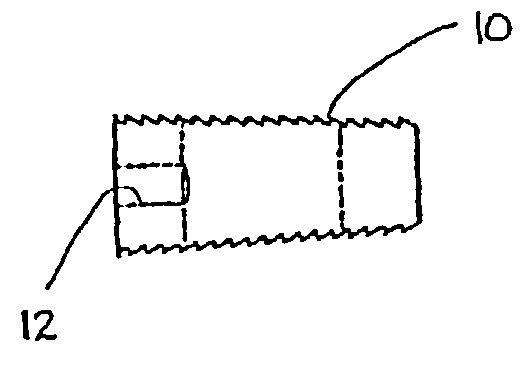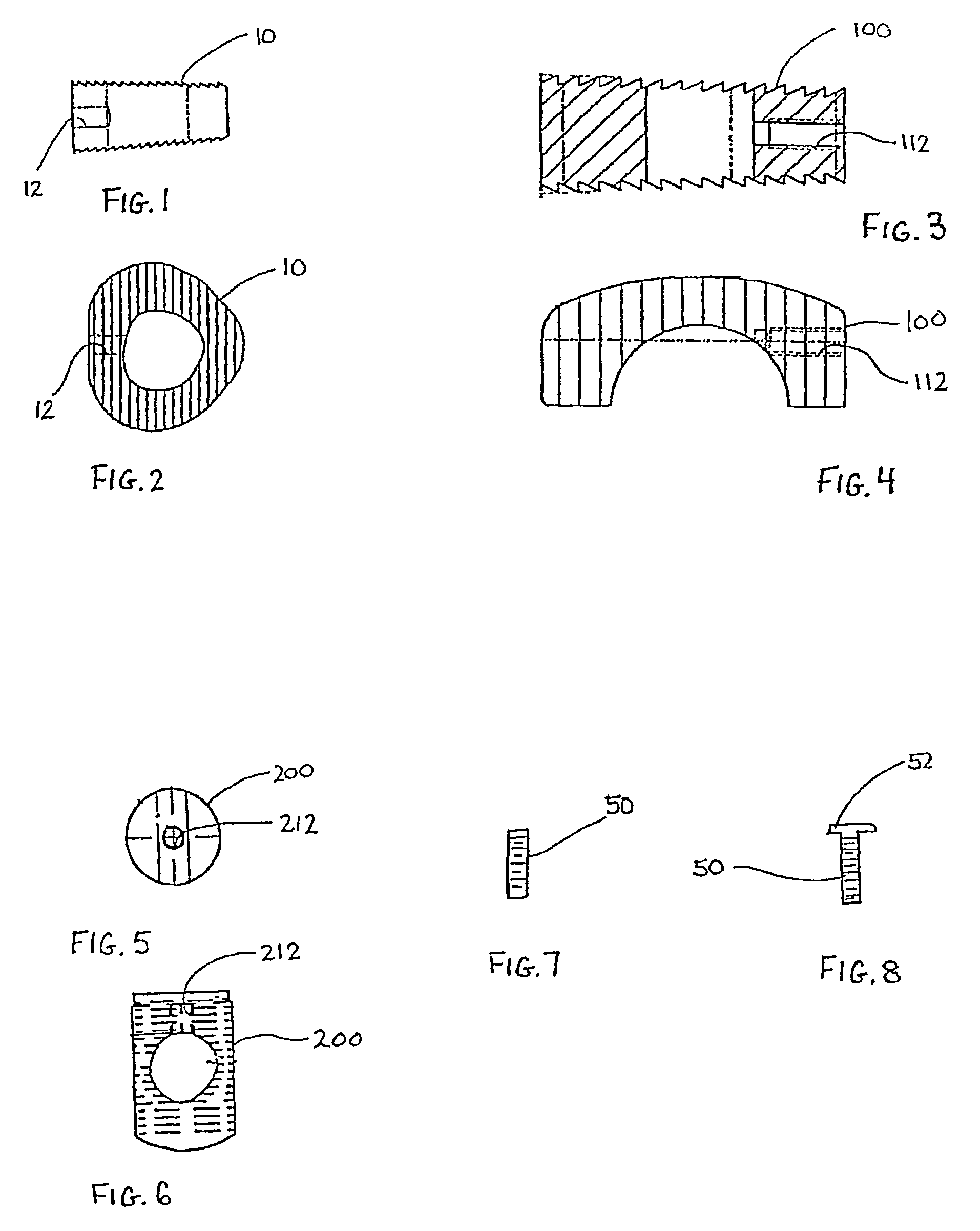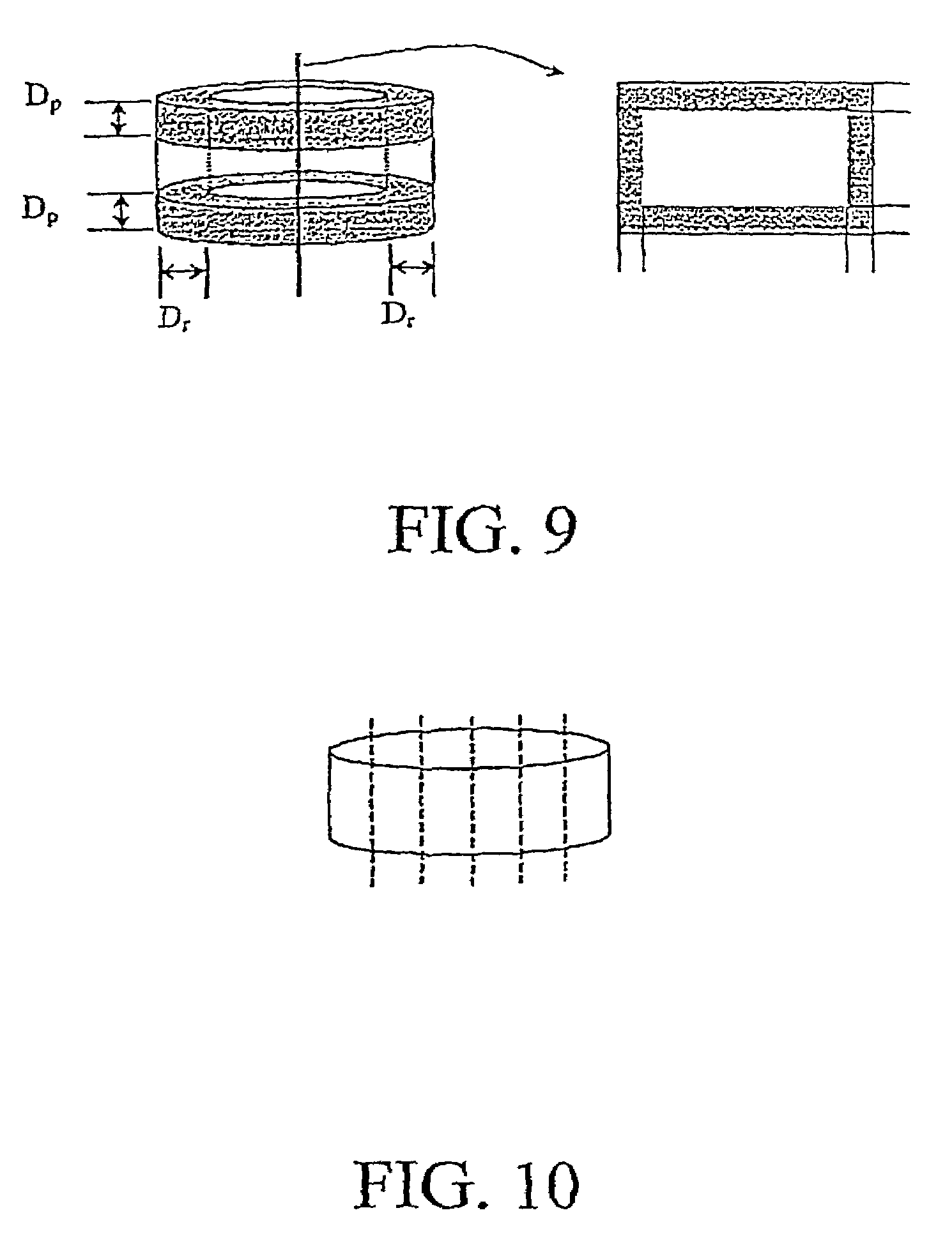Osteoimplant and method for making same
a technology of osteoimplant and bone graft, which is applied in the field of preparing a partially demineralized bone graft, can solve the problems of difficulty in repairing itself, difficulty in integrating the host's blood supply into the cortical bone, and inability to fully integrate the remodeling process, etc., and achieves the effect of convenient placemen
- Summary
- Abstract
- Description
- Claims
- Application Information
AI Technical Summary
Benefits of technology
Problems solved by technology
Method used
Image
Examples
example 1
Surface Demineraliztion
[0072]A study was undertaken to determine the effect of varying penetration of surface demineralization on the osteoinductive response to human cortical bone implants using an athymic rat intramuscular assay. Osteoinductivity is often defined as the ability of the agent to recruit cells to the site, and to convert them to the osteoblastic lineage. Osteoinductivity has been observed to follow an “endochondral pathway” similar to that of embryonic bone when it is first formed. This bone goes though stages, including the penetration and infiltration of cells induction of chondrogenic (cartilage-forming) cells at the site, laying down of cartilage tissue, and the transformation of that cartilage tissue to bone tissue. All of these changes can be tracked over time in histological samples.
[0073]Implants were constructed aseptically from human cortical bone. Cylindrical discs (7±1 mm in diameter and 3±0.5 mm thick) were cut from cortical bone of the same donor. Befor...
example 2
Spinal Fusion Procedure
[0084]In this example, the insertion of osteoimplants having an engagement structure (12, 112, 212) in conjunction with a posterior approach for lumbar discectomy and spinal fusion will be discussed. It is to be appreciated that other surgical approaches, e.g., anterior, postero-lateral, etc., may be utilized to perform the discectomy and insert engagement structure as well.
[0085]Initially, the vertebral column is accessed via a posterior approach with the use of appropriate retractors to retract neighboring muscle tissue, blood vessels and / or nerve tissue. Thereafter, at least a portion of the disc is removed with an appropriate rongeur or cutting implements. A retractor is mounted to the posterior faces of the vertebrae. One retractor suitable for this purpose is the Cloward Lumbar Lamina Spreader manufactured by Codman. The retractor includes a pair of retractor arms which are mountable to the posterior vertebral faces via screws. With the retractor appropr...
PUM
| Property | Measurement | Unit |
|---|---|---|
| thick | aaaaa | aaaaa |
| thick | aaaaa | aaaaa |
| thick | aaaaa | aaaaa |
Abstract
Description
Claims
Application Information
 Login to View More
Login to View More - R&D
- Intellectual Property
- Life Sciences
- Materials
- Tech Scout
- Unparalleled Data Quality
- Higher Quality Content
- 60% Fewer Hallucinations
Browse by: Latest US Patents, China's latest patents, Technical Efficacy Thesaurus, Application Domain, Technology Topic, Popular Technical Reports.
© 2025 PatSnap. All rights reserved.Legal|Privacy policy|Modern Slavery Act Transparency Statement|Sitemap|About US| Contact US: help@patsnap.com



